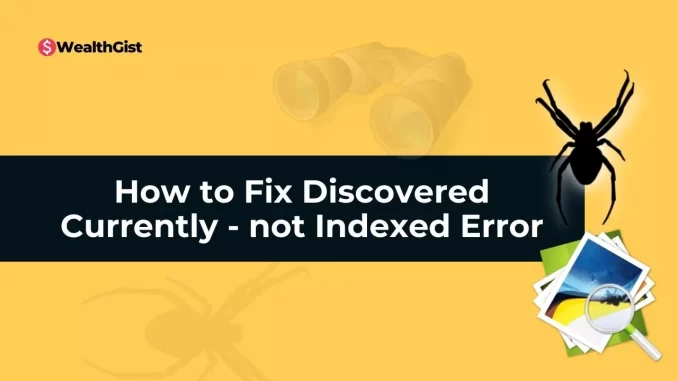Climate change is shaking up the insurance industry. Read about the relationship between Climate change and insurance.
Climate change is one of the most pressing challenges affecting every aspect of our lives, from our health and well-being to our economy and environment.
But, does climate change impact the insurance industry, aside from affecting people and businesses around the world?
In this blog post, we will look into how climate change influences insurance premiums, and how the industry is responding to natural disasters.
Climate Change’s Influence on Insurance Premiums
One of the most visible effects of climate change on the insurance industry is the increase in insurance premiums.
As the frequency of extreme weather events such as floods, storms, droughts, wildfires, and heatwaves increase, so do the losses and claims that insurers have to pay out.
This means that insurers have to charge higher premiums to cover their costs and maintain their profitability. Some of the factors driving premium increases are:
- Increased Extreme Weather Losses
- Difficulty Modeling Future Losses
- Premium Increases and Coverage Constraints
Trending Insurance Issues
- 7 Rider Benefits to Add to Your Life Insurance Plan
- Reasons Why Doctors Need Own Occupation Disability Insurance
- Budget-Friendly Insurance Options: Protecting What Matters Most
- Does Life Insurance Cover Suicide?
- Artificial Intelligence and Insurance: How AI is transforming the insurance industry
- Cyber Insurance: Types, Benefits, Risks, & Choosing the Right Policy
- Pandemic Insurance: Protecting Your Business and Personal Assets in a Post-COVID World
- Sustainability and Insurance: promoting sustainability practices and mitigating environmental risks
- What are the Features of the Best Term Plan Insurance in India?
- 5 Essential Health Insurance Tips for Self-Employed Workers
- What To Expect From an Insurance Transcription Service
Evolving Insurance Coverage in the Face of Climate Change
While climate change poses risks for the insurance industry, it also creates opportunities and incentives for innovation.
Insurers are developing services to meet the changing needs and demands of their customers and society.
Some of the ways that insurance coverage is evolving in the face of climate change are:
New Climate Products:
Insurers are creating new products that tackle specific climate risks and provide tailored solutions for different customers and sectors.
To reduce the need for loss assessment and claims processing, and provide faster and more transparent payouts.
Exclusions and Policy Limits:
Insurers are also revising their existing policies to reflect the changing risk landscape and their risk appetite.
To modify exclusions and policy limits for certain perils or regions that are deemed too risky or costly to insure.
Premium Discounts:
Insurers are also offering premium incentives for policyholders who take actions to reduce their risk or enhance their resilience to climate change.
These discounts or incentives encourage policyholders to invest in climate mitigation, and also lower the losses and claims for insurers.
Industry Response to Natural Disasters
Another aspect of climate change and insurance is how the industry responds to natural disasters, which are becoming more intense due to climate change.
Some of the ways that the industry responds to natural disasters are:
- Risk Mitigation Efforts:
Insurers are actively involved in risk mitigation efforts, like supporting research and development, providing data and expertise, advocating for policy and regulatory changes, and collaborating with stakeholders and partners.
- Post-Disaster Response:
Insurers also provide timely post-disaster response, such as deploying claims adjusters, mobilizing resources, facilitating payments, and offering assistance and advice.
For example, some insurers use drones, satellites, or artificial intelligence to assess the damage and process the claims faster and more accurately, or provide emergency funds, temporary housing, or counseling services to the affected policyholders and communities.
- Industry Groups:
Insurers are also part of industry groups that coordinate disaster response and recovery, such as the Insurance Bureau of Nigeria (IBN), the Nigerian Insurers Association (NIA), and the African Insurance Organisation (AIO).
These groups represent the interests and views of the insurance industry, communicate and engage with the public and the media, and liaise and cooperate with the government and other stakeholders.
Trending Topics on Climate Change and Insurance for 2024
There are several trending topics and emerging issues that will shape the future of climate change and insurance.
These topics talked about the opportunities and challenges the insurance industry faces and the actions and strategies that the industry needs to take to survive.
Some of the trending topics on climate change and insurance for 2024 are:
Climate Transition Plans:
Insurers will need to develop climate transition plans that align their business models, operations, and investments with the goals and targets of the Paris Agreement and the Sustainable Development Goals.
These plans will include how insurers will reduce their greenhouse gas emissions, increase their renewable energy use, and support the low-carbon transition of their customers and society.
They will also need to report on their climate transition plans and progress and engage with their stakeholders and regulators on their climate commitments and actions.
Scaling Climate Adaptation and Resilience:
Insurers will also need to scale up their efforts and investments in climate adaptation and resilience, both for themselves and for their customers and society.
This will involve improving their risk assessment and management capabilities, developing and offering more innovative and affordable climate products and services
As well as supporting and participating in climate adaptation and resilience initiatives and projects.
Also, they need to leverage their data and expertise, and partner with governments, NGOs, and other sectors, to increase the awareness and preparedness of their customers and society to climate risks and impacts.
Task Force on Nature-Related Financial Disclosures (TNFD) Alignment:
Insurers will need to align their reporting with the recommendations and standards of the Task Force on Nature-Related Financial Disclosures (TNFD)
They will need to integrate nature-related considerations into their governance, strategy, risk management, metrics, and targets, and disclose their nature-related financial information to their stakeholders and regulators.
Health Systems’ Climate Resiliency:
Insurers will need to enhance the climate resiliency of their health systems, as climate change poses significant threats and challenges to the health and well-being of their customers and society.
This will involve the need to support and collaborate with health authorities, providers, and organizations, to strengthen the capacity and quality of the health systems and services, and to promote the health and well-being of their customers and society.
Consumer Demands Driving Action Against Climate Risks:
Insurers will need to respond to the increasing demands and expectations of their customers, who are becoming more aware and concerned about the climate risks and impacts, and more willing and able to take action to reduce their carbon footprint and enhance their climate resilience.
This will involve providing more transparent and accurate information and education on climate risks and solutions, that meet the different needs and preferences of their customers
As well as engaging and empowering their customers to participate and contribute to climate action and solutions.
Interest Rate Environment Impact:
Insurers will need to adapt to the interest rate environment due to the economic slowdown and the monetary policy responses to the COVID-19 pandemic.
The low-interest rate environment affects the profitability and solvency of insurers, as it reduces their investment income and increases their liabilities.
Hence, Insurers will need to adjust their asset allocation and portfolio management strategies to cope with the low-interest rate environment and its implications.
Parametric Insurance Solutions:
They will also need to expand their parametric insurance solutions, due to their advantages and benefits over traditional indemnity-based insurance.
This will reduce the need for loss assessment and claims processing and provide faster and more transparent payouts.
Parametric insurance also enables insurers to cover new or emerging risks, such as pandemic, cyber, or supply chain disruptions, and to reach new or underserved markets, such as low-income or rural communities.
Technological Advancements:
Insurers will need to leverage the technological advancements that are transforming the insurance industry and society, such as artificial intelligence, big data, blockchain, the Internet of Things, or cloud computing.
These technologies offer help in enhancing their operational efficiency and effectiveness, improving their customer experience and satisfaction, increasing their risk assessment and management capabilities, and creating new products and services.
Insurers will also need to address the challenges and risks that these technologies pose, such as data privacy and security, ethical and regulatory issues, or digital disruption and competition.
ESG Integration Across Operations:
Furthermore, Insurers will need to integrate environmental, social, and governance (ESG) factors across their operations, as ESG may become a key driver and determinant of their performance and reputation.
ESG integration involves aligning their underwriting and investment activities with ESG principles and standards, such as the Principles for Sustainable Insurance (PSI) or the Principles for Responsible Investment (PRI)
As well as supporting and participating in ESG initiatives and projects, such as the Net-Zero Asset Owner Alliance (NZAOA) or the UN Environment Programme Finance Initiative (UNEP FI).
Net-Zero Finance Commitments:
Insurers will need to fulfill their net-zero finance commitments
Net-zero finance commitments are part of the global effort to limit global warming to 1.5°C above pre-industrial levels, as stipulated by the Paris Agreement.
Insurers must implement their net-zero finance targets and plans, measure and report on their net-zero finance progress and impact
As well as collaborate and cooperate with their peers and stakeholders on their net-zero finance actions and solutions.
10 Ways Climate Change Impacts Insurance Companies
Climate change affects insurance companies both directly and indirectly, positively and negatively.
Some of the ways that climate change impacts insurance companies are:
1. Increased Extreme Weather Losses:
Climate change increases the frequency of extreme weather events, such as floods, storms, droughts, wildfires, and heatwaves, which cause more losses and claims for insurers.
This impacts their profitability and solvency, and may also affect their reputation and customer loyalty.
2. Difficulty Modelling Future Losses:
Climate change also makes it more difficult for insurers to model and estimate future losses from natural disasters, as the past is no longer a good predictor of the future.
This impacts their pricing and underwriting accuracy and reliability, and may also expose them to regulatory and legal risks.
3. Premium Increases and Coverage Constraints:
In addition, Climate change forces insurers to adjust their pricing and underwriting strategies, which may result in premium increases and coverage constraints for certain regions, sectors, or perils.
This impacts their competitiveness and market share, and may also create social and ethical issues.
4. Capital and Liquidity Strains:
Climate change puts pressure on the capital and liquidity of insurers, as they have to pay out more claims and maintain higher reserves and solvency ratios.
This in turn impacts their financial stability and flexibility, and may also limit their growth and innovation potential.
5. Emerging Legislative and Regulatory Pressure:
Climate change may also lead to more regulatory pressure on insurers, as they have to comply with more rules and standards on climate risk disclosure, reporting, management, and mitigation.
This impacts their operational efficiency and effectiveness, and may also increase their compliance costs and risks.
6. Increasing Litigation:
It also exposes insurers to more litigation, as they may face lawsuits from policyholders, investors, regulators, or third parties, who claim damages or compensation for climate-related losses or impacts.
This impacts their legal costs and risks, and may also damage their reputation and trust.
7. Negative Reputation Effects:
It affects the reputation of insurers, as they may be perceived as part of the problem or the solution, depending on their actions and responses to climate change.
This impacts their brand value and recognition, and may also influence their customer satisfaction and retention.
8. Pressure to Decarbonize Underwriting and Investments:
Climate change pressures insurers to decarbonize their underwriting and investment portfolios, as they have to align their business activities with the goals and targets of the Paris Agreement and the Sustainable Development Goals.
This impacts their business models and strategies, and may also create opportunities and challenges for their profitability and growth.
9. Innovation Imperative Around Parametric Products:
Climate change also drives insurers to develop new products and services, such as parametric insurance, which address specific climate risks and provide tailored solutions for different customers and sectors.
This impacts their product development and diversification, and may also enhance their competitiveness and market share.
10. Investment in Climate Resilience Solutions:
Lastly, Climate change helps insurers to invest in climate resilience solutions, such as early warning systems, risk mapping tools, or disaster risk reduction strategies, to enhance the sustainability of their customers and society.
This impacts their social and environmental impact and contribution, and may also generate returns and benefits for their business.
Trending Insurance Issues
- 7 Rider Benefits to Add to Your Life Insurance Plan
- Reasons Why Doctors Need Own Occupation Disability Insurance
- Budget-Friendly Insurance Options: Protecting What Matters Most
- Does Life Insurance Cover Suicide?
- Artificial Intelligence and Insurance: How AI is transforming the insurance industry
- Cyber Insurance: Types, Benefits, Risks, & Choosing the Right Policy
- Pandemic Insurance: Protecting Your Business and Personal Assets in a Post-COVID World
- Sustainability and Insurance: promoting sustainability practices and mitigating environmental risks
- What are the Features of the Best Term Plan Insurance in India?
- 5 Essential Health Insurance Tips for Self-Employed Workers
- What To Expect From an Insurance Transcription Service
Final Note
Climate change and insurance are closely intertwined.
Climate change poses significant risks for the insurance industry, but it also creates opportunities and incentives for adaptation.
Insurers have a vital role and responsibility to provide protection and peace of mind to their customers and society as well as to promote and support climate action and solutions.
Insurers also have a huge influence to shape and transform the future of climate change and insurance, and to make a positive difference for the planet and the people.
We hope you enjoyed reading this blog post and learned something new and useful.
If you have any questions, comments, or feedback, please feel free to leave them below. We would love to hear from you and engage with you.
Thank you for your time and attention.









